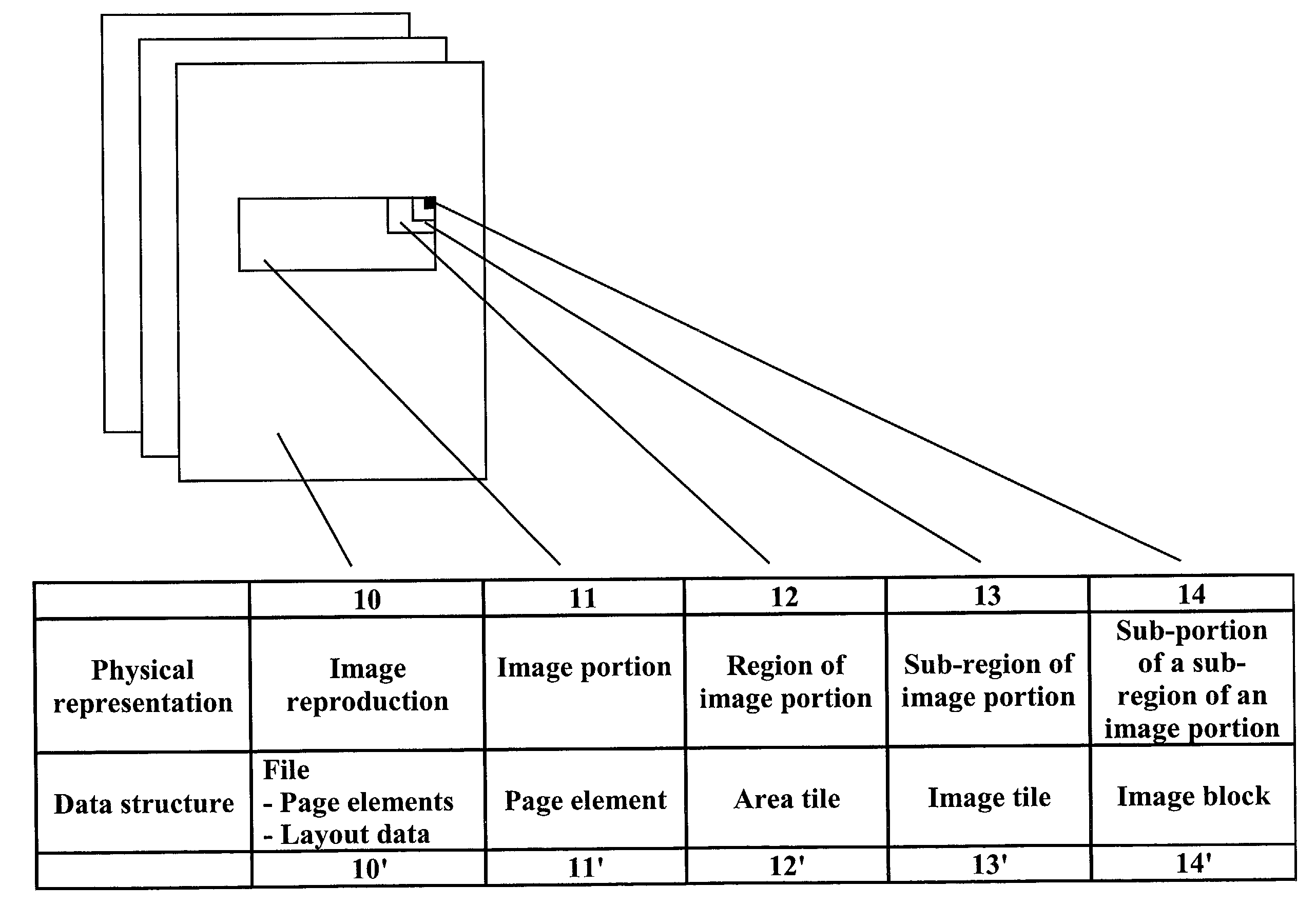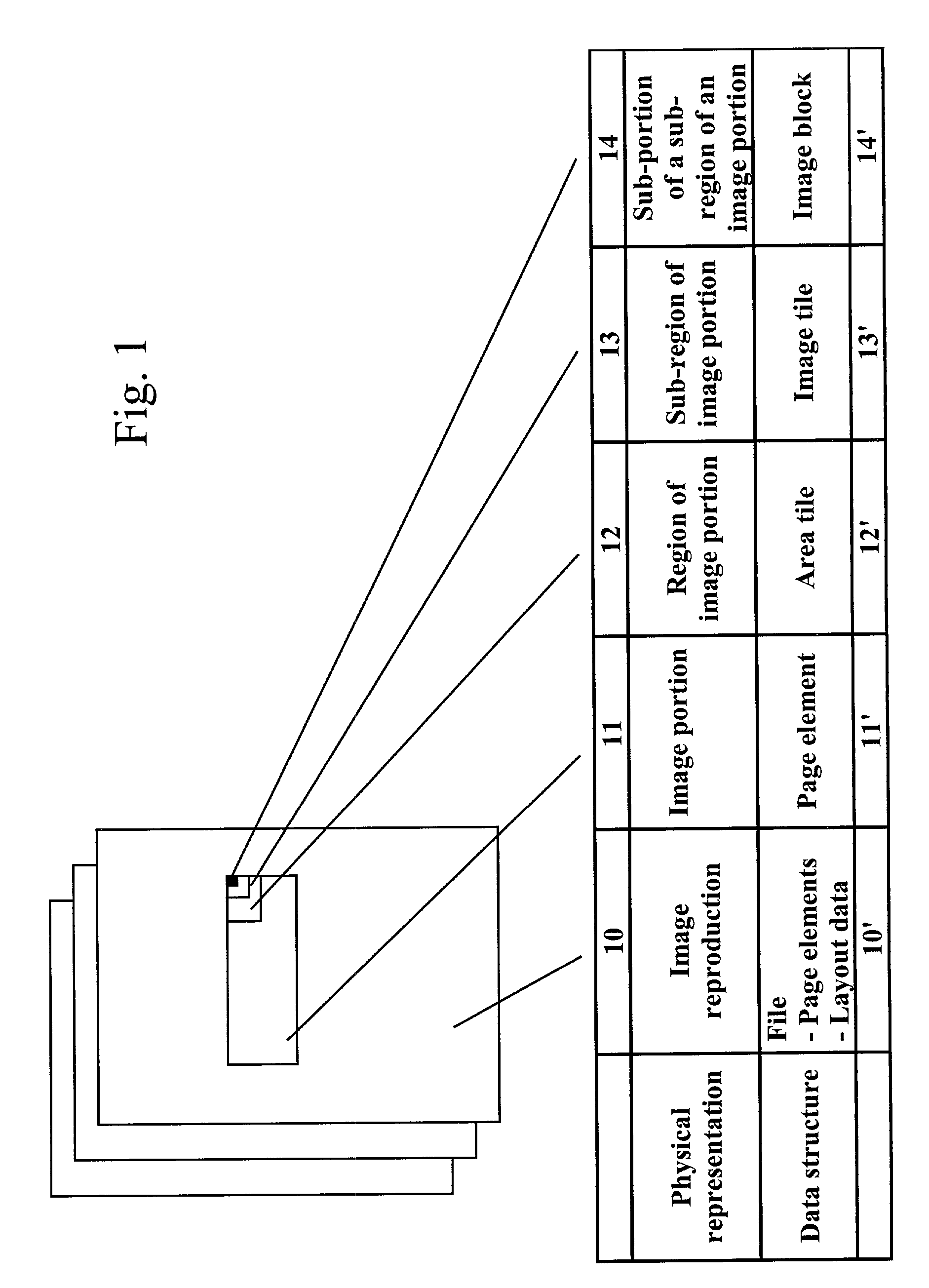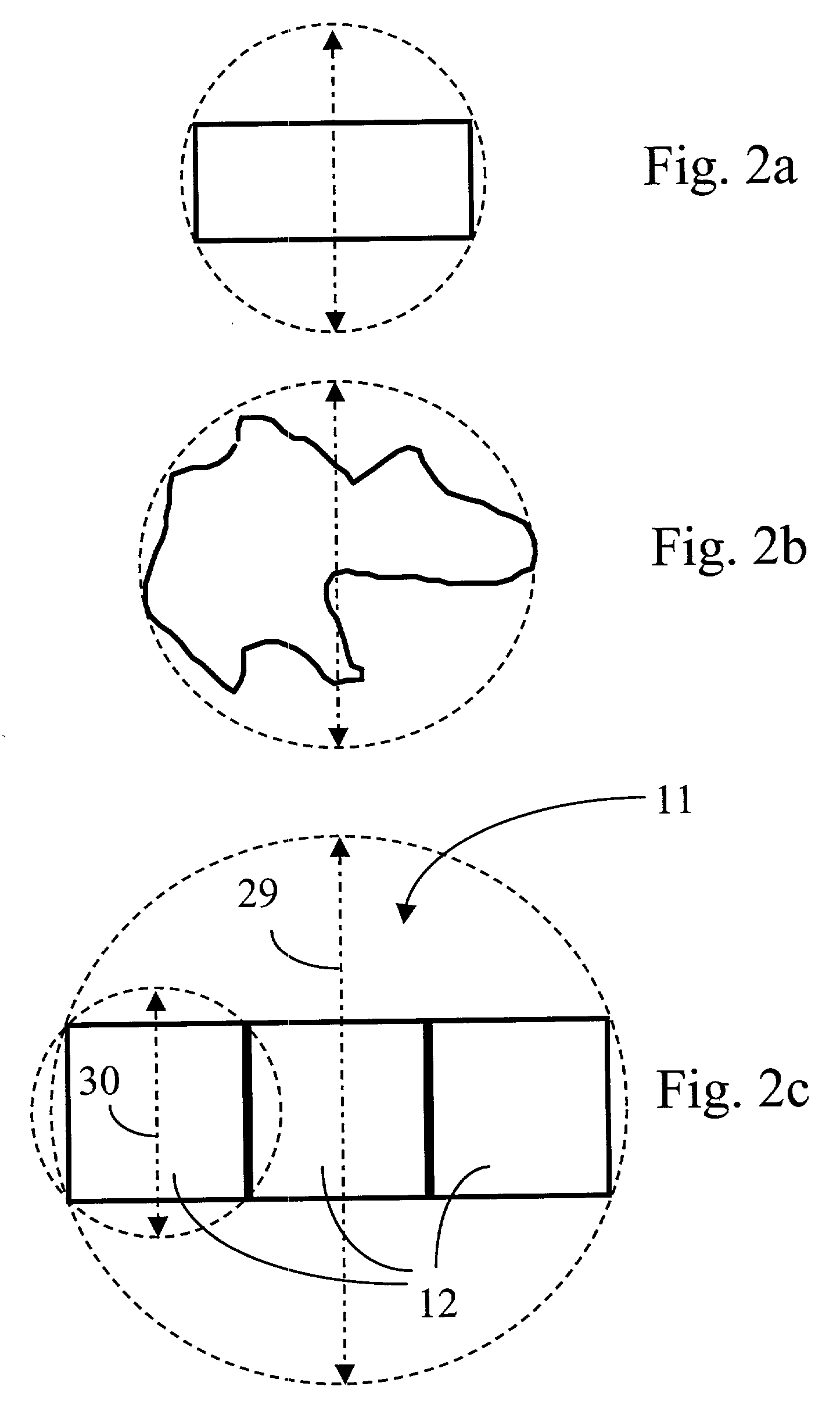Page composition in an image reproduction system using segmented page elements
a page composition and image reproduction technology, applied in the direction of visual presentation using printers, electric digital data processing, instruments, etc., can solve the problems of inability to combine page elements which are compressed e.g. using different jpeg formats, visible distortion, and extra loss of image quality
- Summary
- Abstract
- Description
- Claims
- Application Information
AI Technical Summary
Benefits of technology
Problems solved by technology
Method used
Image
Examples
Embodiment Construction
[0047]Hereinafter the different terms, used throughout the specification and claims to better define the present invention and more clearly distinguish it from the prior art, are explained in relation to FIG. 1.[0048]An image reproduction 10 is a reproduction of the image to be produced. This image can include continuous tone image data as well as line-work data such as text, graphics, or artificially created images. The image reproduction 10 may be a physical reproduction printed out by a printing apparatus such as a digital printing apparatus. The image reproduction 10 can also be displayed as an image on a screen. The image reproduction 10 may also take the form of an electronic reproduction such as a file representing the image and which can be used for further processing. An example of such an electronic reproduction is a file stored in a “tagged image file format” (TIFF File).[0049]An image signal is a signal provided to a printer, display device or other means. The image sign...
PUM
 Login to View More
Login to View More Abstract
Description
Claims
Application Information
 Login to View More
Login to View More - R&D
- Intellectual Property
- Life Sciences
- Materials
- Tech Scout
- Unparalleled Data Quality
- Higher Quality Content
- 60% Fewer Hallucinations
Browse by: Latest US Patents, China's latest patents, Technical Efficacy Thesaurus, Application Domain, Technology Topic, Popular Technical Reports.
© 2025 PatSnap. All rights reserved.Legal|Privacy policy|Modern Slavery Act Transparency Statement|Sitemap|About US| Contact US: help@patsnap.com



